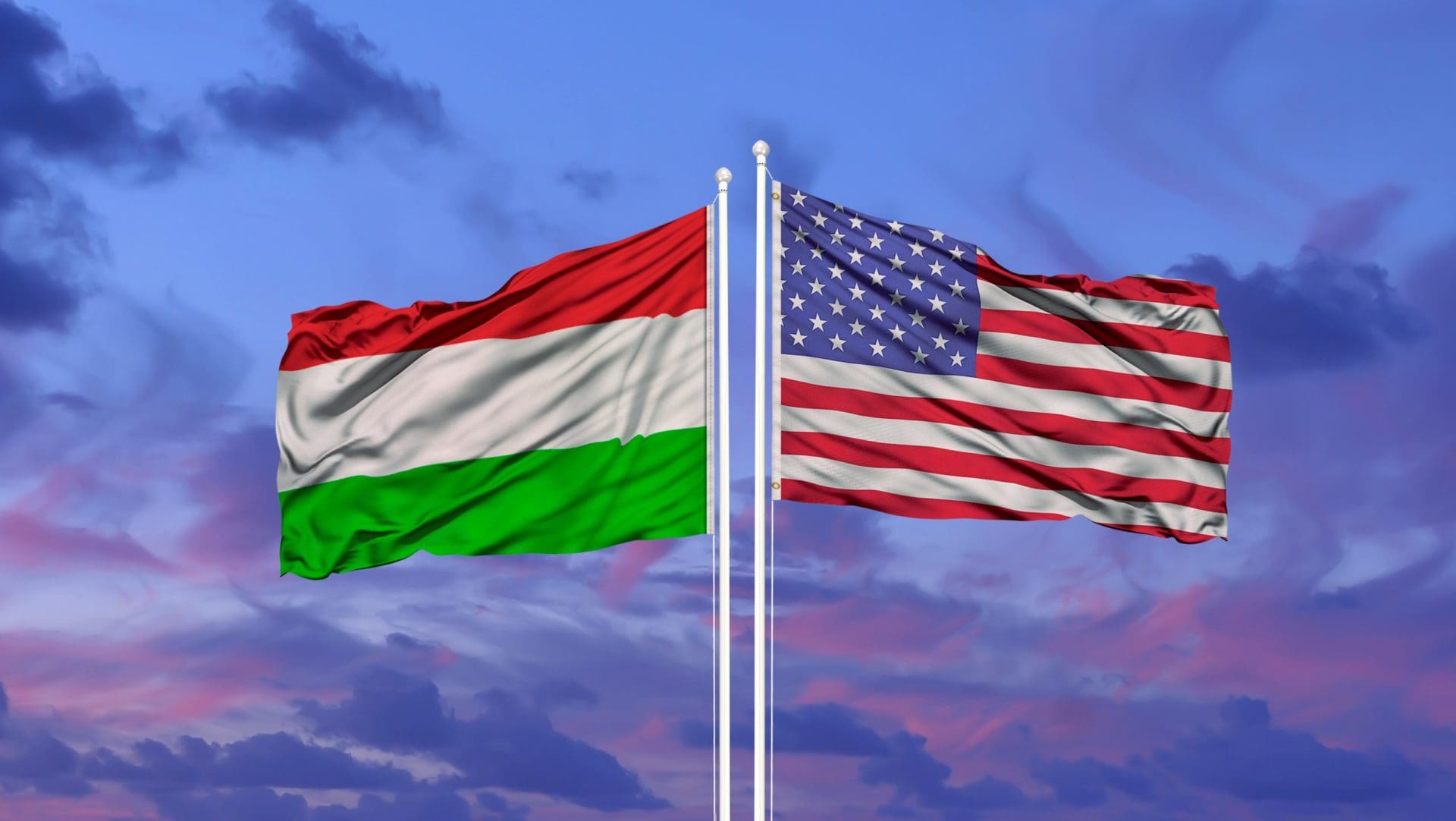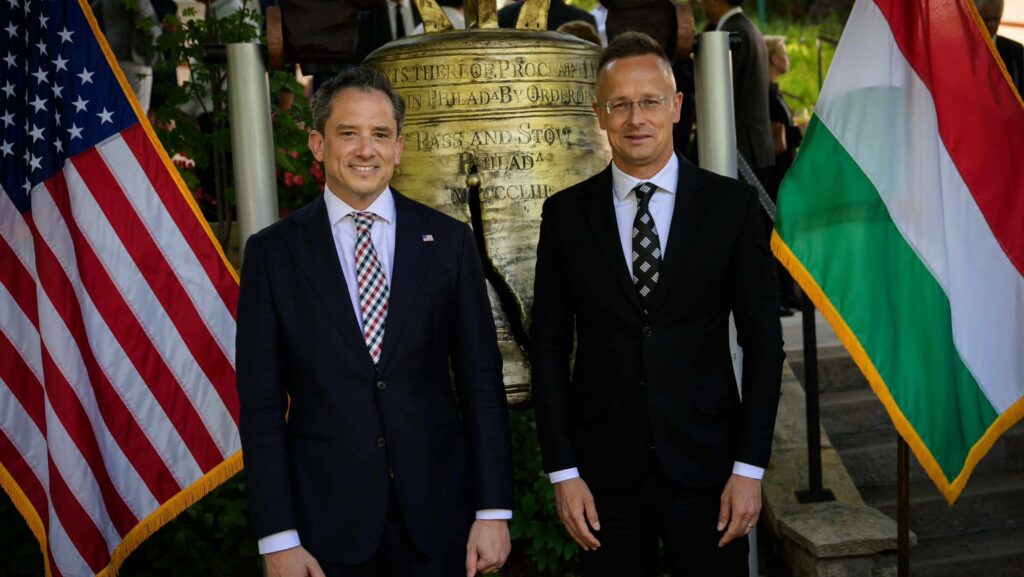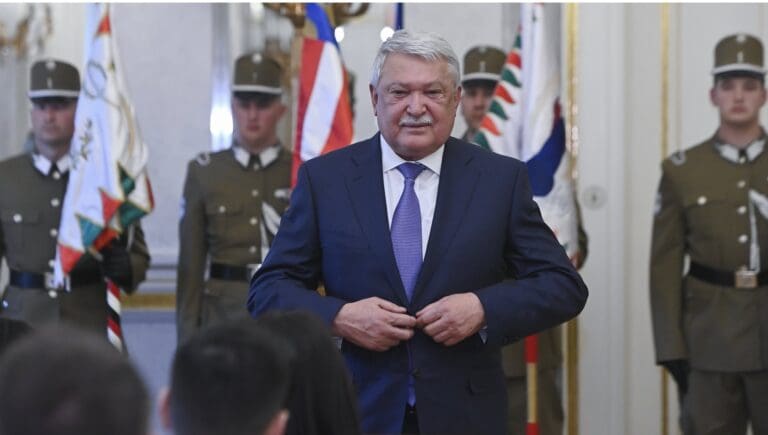As the world watches Ukraine’s heart-wrenching struggle for independence, the region’s history offers important lessons to keep in mind. Not all independence movements are successful, many tragically littering the history of mankind. Nor all independence movements are noble, as no people have the monopoly on goodness and righteousness on evil and debauchery. Yet, there are two peoples, the Americans and the Hungarians, who strove for some of that nobility and righteousness, and thus can be examples for those striving for the same in the present.
Though the Americans and Hungarians are separated by thousands of miles and a vast ocean, they both share a common bond—past and present—of desiring freedom, liberty and a constitutional system to govern their own affairs. Both were and are to this day, enlivened first by the principled stands of lower aristocracy in their peoples’ histories. For the Americans, this was the Magna Carta of 1215, which limited the power of the king, and would give rise to the modern British Constitution. This eventually inspired America’s quest for a constitutional order based on laws, and not of men. In the Hungarian case, the Golden Bull—not too dissimilar to the Magna Carta—was written in 1222, and, in part, inspired a relatively liberal Hungary to take shape for centuries. Outside of Britain and perhaps Poland, this was almost unheard of in Europe until the nineteenth century, no minor feat in European political history.
Both were and are to this day, enlivened first by the principled stands of lower aristocracy in their peoples’ histories
For the story of their respective paths to independence; however, the American and Hungarian peoples did not share the same timeline. The former was somewhat immune from the ravages of geopolitics and stark reality of geography. Though originally a frontier country, and thousands of miles away from the heart of the empire, America at first prospered and thrived from benign neglect. Not originally its own nation, America had the protection of Britain, as well as the passed down customs and traditions of British inheritance. When the political grip of the mother country became too much, however, these cantankerous Americans vociferously expressed displeasure. Or as the wise Anglo-Irish statesman Edmund Burke put it, these colonists, especially those in the northern colonies, were ‘the most dissident dissenters, the most Protestant Protestants’. Not dismayed in the face of the greatest empire to ever stretch the globe, American patriots rose up against the British authority, and ironically on largely British principles, formed a new nation, far from the conniving and domineering powers in Europe. 1776 was the true declaration of their independence, making America a separate, and future power.
Hungarians, on the other hand, at the beginning of their kingdom in Central Europe, started with independence. Although still in the medieval period, long before liberal governance and free markets were in vogue, the ninth through the early part of the sixteenth century saw periods of prosperity and advancement for the Magyars. Unfortunately, this independence was to be lost for centuries. With the marauding Ottomans invading, having just slain the remnants of the Eastern Roman Empire decades before, much of historical Hungary was lost, only leaving two sections: one under Austrian rule in the West, and a quasi-independent country in today’s Transylvania. After more than a century of devastation, pillaging and cultural destruction, old Hungary was restored, but their now long-lost independence was not restored as the Ottomans withdrew.
Much inspired by the American Founding Fathers, the Hungarian reformers captured an old Anglo-American spirit, desiring a country that should govern its own affairs
Under Habsburg deprivations, Hungarian luminaries such as Kossuth, Széchenyi and others, clamoured for more and more autonomy for their fellow Magyars in the 1nineteenth century. Much inspired by the American Founding Fathers, the Hungarian reformers captured an old Anglo-American spirit, desiring a country that should govern its own affairs. Sadly, that mid-nineteenthcentury independent fervour which swept across much of Europe, was either too much in line with the proto-socialists, or was just plainly stamped out by the other extreme force of reaction. Hungary, more driven by classical liberal principles, would soon face the cruelty of the latter. Though the Magyars fought bravely against their Habsburg masters, Russia, ever the ultimate aggressor to threaten or actually demolish freedom in Europe, was called upon. Facing overwhelming odds, Hungary was put back under Habsburg rule, when resistance ultimately proved futile.
Though the story did not end for the Hungarian people when the revolution floundered in 1849, the road was much harder for the Magyars on the road to eventual independence than it was for America. Not bound by the traditional European reality of geopolitics and the predicament of an unforgiving geographic location, surrounded by strong neighbors, America was able to grow apart from the relative chaos. This fortunately included staying away from the din of cannons and rifle shots which rocked European countries throughout much of the nineteenth century, whether these were the grand Napoleonic wars, or the internal wars of German and Italian unification. Save a massive internal civil war, which was traumatic and altered the nation forever, Americans were blessed. With two oceans, relatively weak neighbours, massive resources ready to be exploited, a usually thriving economy to soak up the massive influx of immigrants, coupled with a high birthrate of native and foreigner alike, America was in a most advantageous situation.
Hungary was not so fortunate. After brutality from the Habsburg monarchy, some autonomy was gained for the last few decades of the nineteenth century. While what not many in 1848 had wanted or intended, their sacrifice was perhaps not totally in vain. When Hungary finally gained independence after the dissolution of the Habsburg empire and the end of First World War, a most bitter cup was offered to her. She lost much of her territory, most of her resources and a large portion of her population, a heavy price for independence. Once more, the predicament of geography engulfed her in the machinations of Nazi Germany, which was almost a given, as the Soviet Union was as bad or worse of an option. Again, independence was lost for decades as the Second World War concluded, Hungary being on both the wrong side in geopolitics and on the wrong side of Europe, as the Iron Curtain descended to divide the continent. Thankfully, communism proved a poor taskmaster, rejected by the majority of Central and Eastern Europeans, and unable to properly feed the people, both economically, culturally or spiritually. Aided by American action and support, the fall of the Berlin Wall in 1989 and the collapse of the USSR finally allowed Hungary to finally to breathe freely, fulfilling at least in part the promise of 1848 with the democratic regime change of 1989–1990.
Though the stories of the two countries diverge in many places, when looking at the core values that really matter to countries and nations, it is obvious that neither America nor Hungary ever quit. Liberty, freedom, competitive markets, self-governance, and many other qualities that define free peoples, were never far from the thoughts of Americans and Magyars. It is often forgotten that America, still an adolescent country, was inspired by the Hungarians of 1848, and gladly embraced the revolutionary leader Lajos Kossuth during his American tour after the fall of the Hungarian revolt. It is less likely forgotten that Hungarians, as well as other Europeans, forced in the position of slavish vassals to Soviet totalitarianism, were inspired by the American story and the hard-fought battles by Americans to maintain that storied freedom and liberty.
With the current struggle facing us today, Russia again playing the crushing hammer to those who wish for independence, in this case, the Ukrainian people (not necessarily the Ukrainian government), both Americans and Hungarians should remind themselves of some key facts. First, despite any differences there may have been between them, the revolutionaries of both countries wanted many of the same things: autonomy, recognition as some form of a separate power, and a distinct cultural identity, to name a few. These higher goals should be held up, with any sense of rivalry or feud being placed in secondary importance to the common goal. With Ukraine today, despite their government delving into American politics, and the crass treatment of Hungarian minorities near the border of Hungary, these grievances must be laid aside for now. Instead, all in the West should be cheering on the Ukrainians in their noble struggle against Russian aggression.
Despite any differences, there may have been between them, the revolutionaries of both countries wanted many of the same things: autonomy, recognition as some form of a separate power, and a distinct cultural identity
Secondly, and perhaps more importantly, with 15 March, the anniversary of the Hungarian War of Independence of 1848, just recently commemorated, all those in America and Hungary should be grateful that they live in independent and still relatively free countries. Sometimes it is easy to lose sight of this, especially since the immense sacrifices of our ancestors seem so long ago. But those sacrifices that Americans made in 1776, and Hungarians in 1848, should not be relegated to the mists of time. Rather, they should be constantly brought up again and again to remind our peoples what they had, what they now have, and what they could potentially give up if they forget or grow complacent. While Hungarians had a much longer road to independence, and most of the time a much harsher one, both countries should not only celebrate their iconic and noble heroes of the past. They should also be thankful that those heroes set up their descending generations to live in nations that do not face what Ukraine does now, or the freedom loving peoples in Russia or China experience today as well. Freedom, liberty and independence are not the usual human experience, with force, conformism and slavery being far more common in the tragic annals of history. It should never be forgotten that the dates of 4 July 1776, and 15 March 1848, are not the rule, but the exception. Americans and Hungarians must, therefore, embrace this exceptionalism, and be the well wishers of those who strive for this exclusive club of exceptionalism, too.








